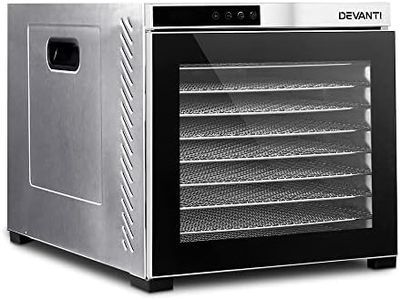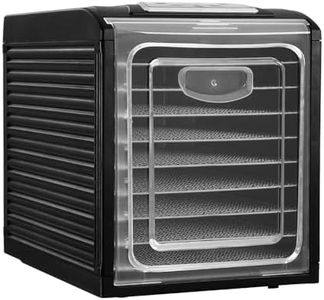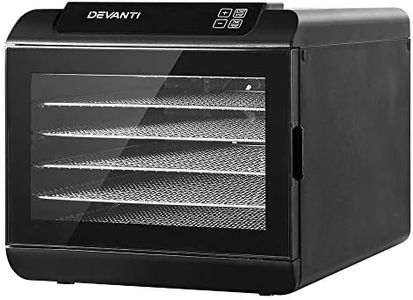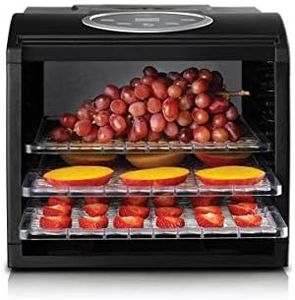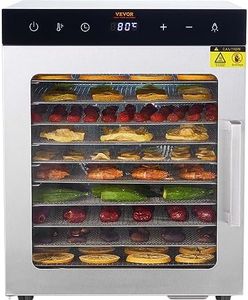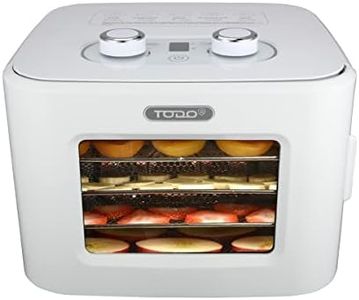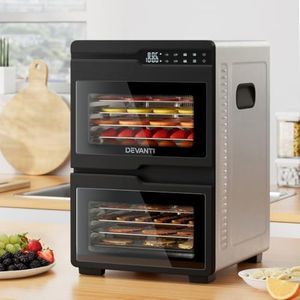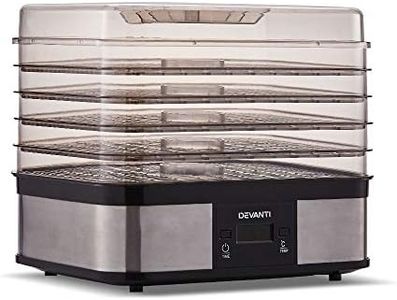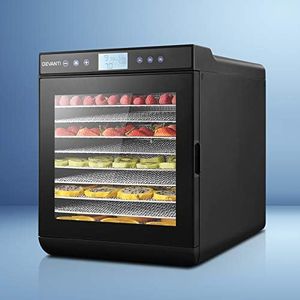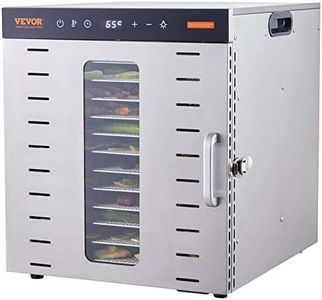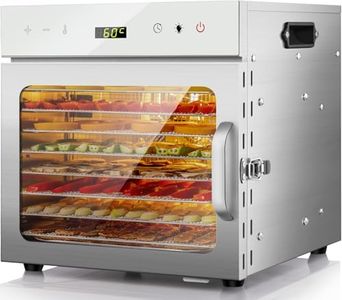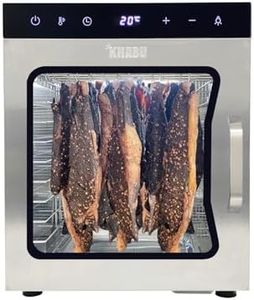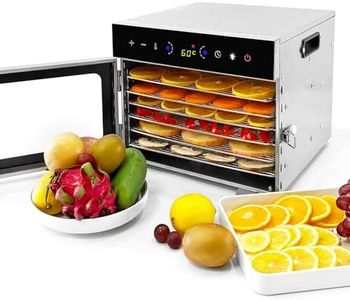We Use CookiesWe use cookies to enhance the security, performance,
functionality and for analytical and promotional activities. By continuing to browse this site you
are agreeing to our privacy policy
10 Best dehydrators
From leading brands and best sellers available on the web.Buying Guide for the Best dehydrators
Choosing a dehydrator can be an exciting step if you want to preserve foods, make healthy snacks, or get creative in the kitchen. The right dehydrator helps you dry fruits, vegetables, herbs, meats, and even prepare treats like fruit leathers. Before you buy, consider how much food you’ll typically process, how much kitchen space you have, and any special features you might find helpful. Understanding the main specifications will make your decision easier and ensure you get a product that fits your lifestyle and needs.CapacityCapacity refers to how much food the dehydrator can hold at one time, usually measured by the number and size of trays. This matters because if you plan to dehydrate large batches or preserve food in bulk, a larger capacity saves time and effort. Smaller models, often with just a few trays, are ideal for occasional use or small households, while bigger units with many trays suit larger families or enthusiastic home preservers. Think about your typical batch size and kitchen space to choose a capacity that won’t leave you frustrated or constantly running extra cycles.
Temperature RangeThe temperature range tells you the minimum and maximum heat the dehydrator can produce, usually listed in degrees Fahrenheit or Celsius. This is important because different foods dry best at specific temperatures—herbs and delicate fruits need lower temps, while meats (for jerky) need higher temps for safety. Basic models may have a fixed temperature, while others let you adjust within a wide range. If you want to experiment with different foods, choose a model with adjustable temperature, and make sure its range fits your interests—at least 95°F for fruits and up to 160°F for meats.
Airflow SystemThe airflow system describes how air moves inside the dehydrator—either from the bottom, top, or side. This affects how evenly foods dry. Vertical airflow (top or bottom fans) can lead to uneven drying and may require you to rotate trays occasionally, while horizontal airflow (side-mounted fans) tends to offer more uniform results. If you prefer a 'set it and forget it' approach and plan to dry mixed food types at once, horizontal airflow is a great choice, while for simple single-food batches, any type works.
TimerA timer lets you set a specific drying time. Some dehydrators come with an integrated timer, while others require manual monitoring. Having a timer is helpful if you want your machine to turn off automatically when finished, which can be more convenient and prevent over-drying. For those with busy schedules or overnight drying plans, a built-in timer is a practical feature, while manual options may be fine if you’ll be around to check.
Ease of CleaningEase of cleaning covers how simple it is to wash the trays and interior. Removable, dishwasher-safe trays save time and make maintenance less of a chore, especially after sticky foods like fruit leathers. Smooth surfaces are easier to wipe than ones with lots of nooks and crannies. If you plan to use your dehydrator frequently or try recipes prone to messes, look for these features to make your experience more enjoyable.
Noise LevelNoise level refers to how loud the dehydrator is during operation, generally due to the built-in fan and heater. This matters if you have a quiet home, run the dehydrator overnight, or have sensitive ears. While all dehydrators will make some noise, some run louder than others. If possible, check user reviews or try to hear a model before buying to get a sense of what would be comfortable in your living space.
